At Last: Village and Residents Agree to a Stormwater Management Plan for Cayuga Pond
- Details
- Hits: 3691
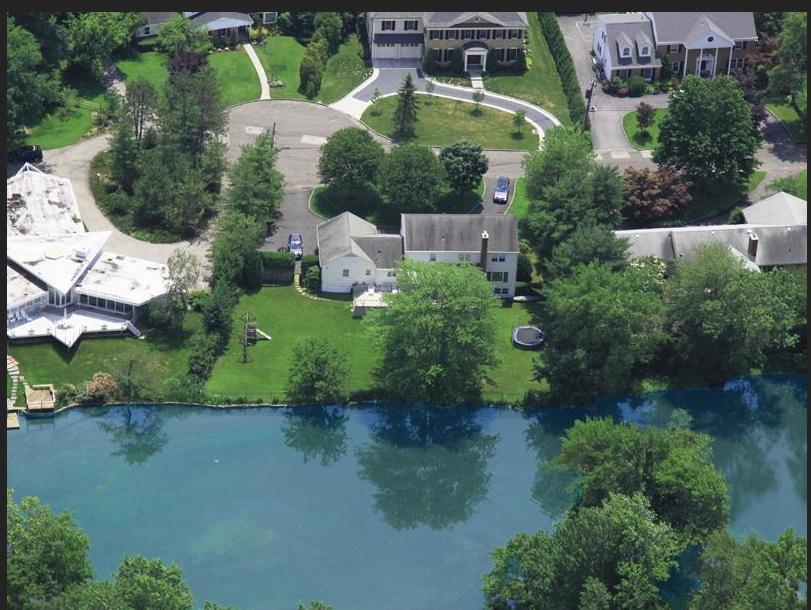 On Wednesday July 11th, the Scarsdale Board of Trustees and Robert DeGiorgio of Dvirka and Bartilucci Engineers met once again with residents to discuss, and hopefully agree upon a "modified modified" plan to mitigate the stormwater issues in the Fenway Golf Club Area.
On Wednesday July 11th, the Scarsdale Board of Trustees and Robert DeGiorgio of Dvirka and Bartilucci Engineers met once again with residents to discuss, and hopefully agree upon a "modified modified" plan to mitigate the stormwater issues in the Fenway Golf Club Area.
For those unenlightened, the Fenway Golf Club Area, or critical Sub-Drainage Area SR 3, has been deemed a FEMA flood hazard area. These flood areas are determined using statistical analyses of records of river flow, storm tides, rain fall, information obtained through consultation with the community, floodplain topographic surveys, and hydrologic and hydraulic analyses. Due to its particularly low elevation of 225 feet, all 271 acres of the Fenway area are deemed a flood plain. But some specific areas within SR 3, namely Canterbury and Cayuga Road, are particularly vulnerable to flooding issues because of their proximity to Cayuga Pond, which tends to overflow and flood during intense storm events.
During the most recent meeting between the Board of Trustees, D&B Engineers and the residents of this area, neighbors shared stories and pictures of their own personal battles with excess storm water, arguing over who had the highest water level in their basement, almost as if it were a contest. To someone who hasn't dealt with much flooding, I was dumbfounded when I heard that during the last intense storm event, two different residents each reported finding a snapping turtle in their basement. However, I was alone in my bewilderment. These residents are so accustomed to dealing with these flood issues that none were even fazed. Seconds later, another resident shared a picture of his backyard, which looked virtually identical to a swamp. Once again, I was alone in my enthrallment.
Despite their novelty to me, these flooding issues are certainly not breaking news, as the Village has been battling excess storm water since 2004, when they first retained engineers Dvirka and Bartilucci (D&B) following a Storm Water Drainage Condition Survey. Five years later, in 2009, D& B formulated the 2009 Comprehensive Storm water Management Plan, which proposed certain modifications to the current drainage structure. Since then, there have been dozens of alterations to these plans, particularly for the Fenway area.
During the previous meeting on May 14th, D&B proposed the "Modified Plan." This plan focused on improving water flow from Cayuga Pond into the open watercourses along Cayuga and Canterbury Roads to the culvert at Canterbury Road. The plan was for Cayuga Pond to be converted from a recreational pond into a storm water detention basin to manage excess storm water runoff. Another aspect of this modified plan was improvement of the culverts (drain pipes that allow water to flow under roads) on Cayuga and Canterbury Road. These improved culverts were meant to allow for better water flow and balance through the piping systems.
While this proposal seemed to show promise, much of the work involved needed to be implemented on private property and restrictive deeds and covenants obligate the homeowners to underwrite a portion of the project. In addition, some residents just simply did not agree with the logistics of the plan and felt it would not provide sufficient stormwater mitigation.
In response, the Village Board of Trustees decided to hold another meeting last Wednesday in hopes of reaching a consensus on the newest "Modified Modified Plan." Currently, the open watercourse is impacted with sediment accumulation that needs to be removed in order for the depth of water flow to be where it should be. There are 8 inches of pocket sandbars, which limits the capacity of the pipe to carry water at peak flows. This limits the ability of the system to drain significantly. So in order to increase the systems draining ability, the Village felt that the best option is to create an open channel, allowing water to flow in to the system on the opposite side of the road, as well as continue down the middle, thus creating a balancing effect. Currently, water on Canterbury Road takes a sharp 90-degree bend and enters a manhole, which is creating the water backup. By having water cut straight across the road with an open channel, you allow water to flow across the street and disperse more evenly in a more natural pattern. Simply put, there would be two paths for the water to flow, rather than one, thus giving the system capacity to receive more water. In addition, there will be a large grate spanning across Canterbury road, so one will actually be able to see inside the watercourse. This makes the system easy to inspect and clean out, which is important when considering the amount of sediment in the culverts. In addition, this plan involves Village engineers performing hydrostatic analysis on the system down stream to see if there is potential to capture some detention in the village owned property by the medical center.
An important distinction between this "Modified Modified Plan" and the previous "Modified Plan" is that this one deliberately does not involve private property. The village does not want to perform any structural modification to private homes because that would raise a plethora of new financial and legal issues. That could ultimately delay this process even further, and it could take another two years before any changes are made. To avoid this, the village plans to work solely on public infrastructure, curb line to curb line, within their right of way. Despite various concerns and differing opinions, everyone agreed to move ahead with this project, which is expected to begin next spring.
While everyone was relieved to reach a consensus, which was necessary in order to get construction started by spring, many residents remain cautious and concerned. They are happy that SOMETHING is finally being done to mitigate flooding in their neighborhood, but many wonder if that something is enough.
With these modifications, the system should be able to withstand a mild storm that produces about 3-3.5 inches of rain, without any major flooding issues. However, residents are still concerned about larger storm events. The Village recognized this concern, stating that they do anticipate positive results with moderate storm events, but realize that large storm events (which produce 6+ inches of rain) will likely still cause some flooding.
With the looming threat of continued flooding from large storms, residents were anxious to expand this project to private property in order to increase their homes defense against flooding. Some residents were willing to spearhead working with the village to have all residents private streambeds cleaned out, which would make a big difference in terms of peak water elevation and flow. Keeping them clean on a regular basis would help immensely in terms of flooding. The village stated that they would gladly work with all the homeowners to come up with a plan like this in the near future. But as for right now, they feel that this modified modified plan is holistically positive for the entire watershed and will yield a massive improvement because the improved flow won't allow a for a backup of water.
Kykuit, Westchester's Relatively Modest But Grand 'must-do' Attraction
- Details
- Written by Rob Schweitzer
- Hits: 3620
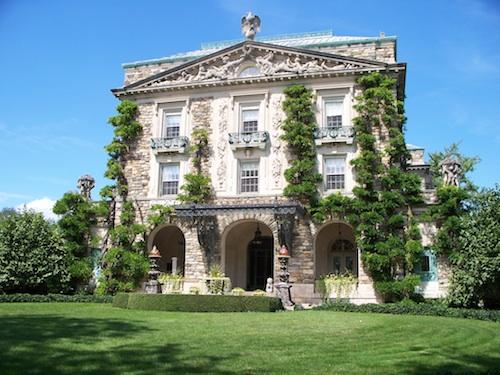 In 1904, the world's richest man was John D. Rockefeller, Sr. Less active by then in his role at the helm of Standard Oil, the hugely profitable company he founded in 1870, JDR would soon become known as the founder of modern philanthropy and one of the most generous businessmen in our nation's history, who gave away hundreds of millions of dollars during his lifetime.
In 1904, the world's richest man was John D. Rockefeller, Sr. Less active by then in his role at the helm of Standard Oil, the hugely profitable company he founded in 1870, JDR would soon become known as the founder of modern philanthropy and one of the most generous businessmen in our nation's history, who gave away hundreds of millions of dollars during his lifetime.
With his primary residence in New York City and another home outside his native Cleveland, JDR purchased 400 acres at Pocantico Hills in 1893. The parcel would ultimately grow to more than 4,000 acres.
At first, the Rockefeller family took up residence in an existing house, but that structure burned in 1902. Despite his wealth and stature, when it came time to construct a new house on "Kykuit Hill," an exposed hilltop section of the site towering over the village of Tarrytown some 500 feet above sea level, JDR sought to erect a modest, unassuming abode meant for comfort, not for show. A devout Baptist, JDR was not a man prone to extravagance, despite his significant wealth.
Before learning the story behind the house, many visitors to Kykuit, which is open five days a week for public tours, comment on how "livable" yet "grand and impressive" the mansion is. Compared to over-the-top Gilded Age relics dotting the landscape of Newport, Kykuit feels like a modest family home. Kykuit's tour guides explain the history of how the house was built, providing context for the house's practical, yet commanding presence.
Consistently rated the top visitor attraction in the lower Hudson Valley, Kykuit features grand architecture, world-class art, and elaborate gardens. Westchester Magazine includes a visit on its "must-do" list, calling the site "spectacular indoors and out." It includes a six-story stone house, expansive terraced gardens, art galleries, outdoor sculpture, commanding Hudson River views, and much more.
During tours of Kykuit, visitors hear not only the story behind the house, but also tales of the Rockefeller family's contributions to philanthropy, conservation, business, government, and the arts.
A major patron and connoisseur of modern art (traits he picked up from his mother, Abby Aldrich Rockefeller, a founder of Manhattan's Museum of Modern Art), Nelson Rockefeller lived there while he was governor of New York and Vice President under Gerald Ford. He carefully placed modern sculpture throughout Kykuit's classical gardens and turned what was largely unused basement space into subterranean art galleries for his collection of, among others, rare Picasso tapestries and Alexander Calder drawings, all of which can be seen by the public during tours of Kykuit.
The Kykuit season runs through November 11. Tours are available Wednesdays-Sundays plus holiday Mondays. Visitors can choose from four tours: Classic, Grand, Timesaver, and Selected Highlights.
The Classic, ideal for first-time visitors, is a shorter experience than the comprehensive three-hour Grand. Besides the mansion, both of these tours include visits to Kykuit's art galleries, terraced gardens, and Coach Barn, with its collection of horse-drawn carriages, vintage automobiles, and equestrian equipment. The 90-minute Timesaver is ideal for those on tighter schedules, while Selected Highlights maximizes time in the estate's gardens.
Historic Hudson Valley operates the public visitation program at Kykuit, a historic site of the National Trust operated and maintained by the Rockefeller Brothers Fund as a center for its philanthropic programs.
Visitors can buy their tickets online in advance, choosing the exact tour, time, and date they want to visit. Tickets are on sale now at www.hudsonvalley.org.
Advanced ticket buying is strongly recommended, particularly for weekend tours, which fill up quickly. Besides online at www.hudsonvalley.org, tickets may be purchased by calling 914-366-6900 (service charge additional) or at the Kykuit Visitor Center at Philipsburg Manor, 381 North Broadway (Route 9) in Sleepy Hollow.
Seniors .... Is It Time to Make the Move?
- Details
- Hits: 3329
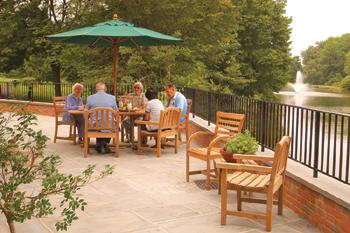 Scarsdale is a special place and a wonderful community for seniors. The Village sponsors senior recreational programs, lectures, and trips specifically designed for seniors. And then there are a rich variety of adult education programs at the high school in the fall, winter, and spring. The Library, too, has numerous public programs for seniors year-round. And because Scarsdale is so close to the city it is easy for seniors to take advantage of the rich cultural offerings at world-class museums, concert halls, and of course Broadway. Westchester also has a host of cultural offerings many of which are presented at nearby Purchase College.
Scarsdale is a special place and a wonderful community for seniors. The Village sponsors senior recreational programs, lectures, and trips specifically designed for seniors. And then there are a rich variety of adult education programs at the high school in the fall, winter, and spring. The Library, too, has numerous public programs for seniors year-round. And because Scarsdale is so close to the city it is easy for seniors to take advantage of the rich cultural offerings at world-class museums, concert halls, and of course Broadway. Westchester also has a host of cultural offerings many of which are presented at nearby Purchase College.
There are, however, a large number of seniors who because of infirmities, the loss of close family or friends, an inability to drive, poor finances, or simply a lack of motivation or a feeling of insecurity do not take advantage of the many opportunities our community has to offer.
As many seniors grow older, whether in good health or not, their housing needs change markedly. In earlier years they may have been searching for more space, a larger home, more prestige, or the best schools. At some point, their priorities shifted and those issues now aren't as important as they once were. For those seniors who are planning to downsize, one option is the increasing number of senior living communities here in Westchester and elsewhere.
However, you may be asking yourself am I ready for Senior community living? Before you say "I'm not ready for a retirement community," you owe it to yourself to answer these questions.
What is it I'm not ready for? Often, people confuse moving to a senior living community with giving up all the things they hold dear. You may find today's senior communities to be far different than you might have imagined. They are for people who want to maintain their independence, expand their horizons, and make their own decisions. So residents enjoy life more - not less.
Increasingly seniors are moving to senior living communities and saying goodbye to increased property taxes, increased school taxes, maintaining the condition and appearance of their home, insurance, mortgage, heating and air conditioning, plumbing, electrician, painting, landscaping, security and cleaning services, among other expenses.
In fact, you may be a senior or a child of the senior, who is seriously thinking of moving to a senior community. If this is the case here are a few things you should know. Selecting the right senior living community is an important decision that involves more than simply choosing a floor plan - it's about lifestyle. And in addition to meeting social, emotional, spiritual, cultural, educational and recreational requirements, you also want to ensure that there is a continuum of care in place to meet the senior's needs if and when they change.
How will you know when it is time to sell your home and move to a senior community? Do you worry about home maintenance? Are you tired of shopping and preparing meals? Is driving an increasing concern? Do you have health concerns? Are you troubled about personal safety and the security of your home? Would you like to explore new interests and meet new friends? If so, now may be the time to experience the freedom a service-enriched senior living lifestyle can offer you.
Still, you may be asking yourself why should I consider a move if I'm still healthy? For some seniors the answer is the following question, can you think of a better time to move? Most people need to make housing adjustments as they grow older, and most residents who have moved to quality senior living communities say that they're glad they decided to move while this important decision was still theirs to make. You've planned ahead your whole life, so you may not want to wait until a crisis forces you or your loved ones into a decision you haven't prepared for.
Does a senior living community make sense financially? When compared to the monthly expenses and upkeep of a house, many senior living residents have found that they actually spend less per month and gain countless additional benefits by moving to a senior living community.
Does maintaining a home in Scarsdale make sense for most seniors? The answer is – definitely for many and probably not for others.
John Baer is a licensed real estate agent associated with Prudential Centennial Realty, a resident of Scarsdale for the past 42 years, and since the 1980s a consultant to senior living communities helping them enrich their environments. John now assists senior home sellers interested in senior communities navigate through the confusing options by identifying the right environment for each senior based on his or her individual circumstance. To learn more about this topic he can be reached at jbaer@PruCent.com or visit his website at www.WestchesterHomes.info.
The Real Moms of Scarsdale
- Details
- Written by Joanne Wallenstein
- Hits: 8606
 Is Andrea Sanderlin, the enterprising pot producer, a typical Scarsdale mom? She is depicted in her five-bedroom Mediterranean home on Saxon Woods Road and her Mercedes SUV as if that is all it takes to be a Scarsdale mom. But isn't there more behind the front door? I like to think so.
Is Andrea Sanderlin, the enterprising pot producer, a typical Scarsdale mom? She is depicted in her five-bedroom Mediterranean home on Saxon Woods Road and her Mercedes SUV as if that is all it takes to be a Scarsdale mom. But isn't there more behind the front door? I like to think so.
In fact, Andrea Sanderlin has almost nothing in common with the moms I know here. First; education. I would be hard pressed to find a Scarsdale mom who failed to graduate from high school; apparently Sanderlin dropped out of high school and had a baby at age 18. Most of the bright woman I've met here did far more than succeed at high school, proceeding onto college and earning advanced degrees in the law, business, medicine, and more.
Work: From accounts in the press, Sanderlin never had a real job and certainly not a  profession. But speak to the women of Scarsdale. If you don't find them on the train platform commuting to work now, they'll share their histories of impressive careers in banking, publishing, advertising, real estate and more. The women of Scarsdale I know are enterprising. Unlike Sanderlin, they don't work under the radar but in broad daylight and pay taxes on what they legitimately earn.
profession. But speak to the women of Scarsdale. If you don't find them on the train platform commuting to work now, they'll share their histories of impressive careers in banking, publishing, advertising, real estate and more. The women of Scarsdale I know are enterprising. Unlike Sanderlin, they don't work under the radar but in broad daylight and pay taxes on what they legitimately earn.
Community: After Sanderlin's arrest hit the news, I asked many people around town if they knew Sanderlin. I couldn't find a single person who had made her acquaintance. In fact, I got a call from a CNBC producer who sought information from me because no one knew anything about her. She had not joined the PTA, volunteered at a religious institution, served on the Junior League or led the scouts. Her name was nowhere to be found. When she posted a $500,000 bond for bail, even the backers of the bond did not know her and the judge warned that she needed to add some blood relatives to the names on the list of her supporters.
Not here: The Scarsdale moms I know are connected. They attend local meetings, campaign for the school budget, volunteers for worthy causes, produce plays, plant community gardens, organize fundraisers, join, raise their hands, speak out, and in short, care. Not Sanderlin.
What's the message? The right address and a luxury car doesn't make the Scarsdale mom. The reason no one knew her here is because she was not one of us. She was busy growing weeds while we were tending to our families, our jobs and our community. Pat generalizations about people and places are often just that: pat. Pleez....don't insult the real moms of Scarsdale by equating us with Andrea Sanderlin.
Preparing Your Child for Sleepaway Camp
- Details
- Written by Ellen Wylie
- Hits: 3519
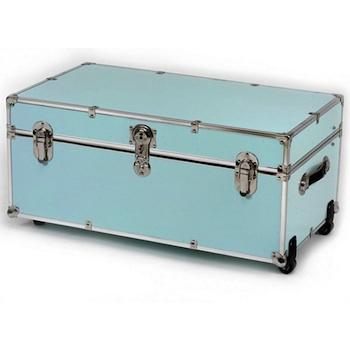 With all of the cold rainy weather we have had, it's hard to believe that the upcoming weekend marks the start of the 2013 camp season at most sleepaway camps. Here are a few tips for those who are sending their children away for the first time and for parents of campers who are nervous about returning to camp:
With all of the cold rainy weather we have had, it's hard to believe that the upcoming weekend marks the start of the 2013 camp season at most sleepaway camps. Here are a few tips for those who are sending their children away for the first time and for parents of campers who are nervous about returning to camp:
• Be positive and upbeat: it is totally normal for both children and parents to feel a little worried or anxious before the start of camp. Be positive with your child and, even if you are now wondering how you ever decided to send your little camper away this summer, do not show your child that you have any doubt. Reassure your child that it is normal to feel nervous, but that you know they are ready to do this and that they are going to a wonderful and safe camp where they will have fun and be well taken care of. Let them know that there will always be a nice counselor to go to if they need a grown up or a doctor/nurse to go to if they don't feel well. Tell them that they will make new friends and the staff will help them. Let your child know that you think they will do great and they will love camp.
2. Follow your child's lead: children are busy in June with the end of the school year and their activities. Let them enjoy those activities and don't dwell on them leaving or how much you will miss them. Talk about camp when they bring it up and, if they are scared, tell them that is normal and talk to them about what to expect at camp. Empower your child with information, answer their questions and help them feel prepared.
3, Enlist your child in any final shopping/packing/decisions on what to bring: this can help turn nerves into excitement. Have them bring a favorite stuffed animal or blanket from home as well as a small photo album with pictures of family and friends. Preaddressed, stamped envelopes with their stationary are helpful for younger campers.
4. Have a letter waiting for them at camp and make it positive. You might want to even throw a note or little surprise into their camp bag. (But do not send excessive amounts of bunk junk—much of it will come home unopened).
5. Do Not Make Deals/bribes: when they are really worried, some children will ask their parents if they can come home early if they don't like camp. As hard as it may be, your answer has to be no. If your child thinks that coming home early is an option, they often dwell on whether they should stay or go home. This puts a lot of pressure on a child and often stops them from getting totally involved in camp and making the commitment to adjust and staying.
6. If you Feel like your Child Has Extreme Anxiety about Going: call the camp. Speak to the director or group leader about how to support your child and how to set up your child so that they will succeed.
7. Do Not Prolong the Goodbyes: give your child a big hug, tell them you love them and then let them get on the camp bus. Camps send wonderful and nurturing staff members to ride on the bus with the children. Enlist one of them if your child is having trouble getting on the bus or needs to find another camper to sit with. I know that it is heart-wrenching if it is your child, but sometimes there are tears at the bus. Let the camp staff help you and know that your child really will be fine. The children have fun on the bus and start to bond. If you drive your child to camp, find a staff member to leave them with and let them walk away from you so they do not have to watch you leave.
As for you, I suggest that parents have sunglasses at the bus so your camper will not see if you are teary. Make plans for the rest of the family for that day/weekend so you are not sitting around dwelling on whether your child got to camp yet and how s/he is doing (many camps will call to let you know). Remember that the hardest part for you is the beginning of the first summer. Once you know that your camper is happy, it gets much easier and the time away really does go fast. Please remember that you have given your child an incredible gift—the gift of camp.
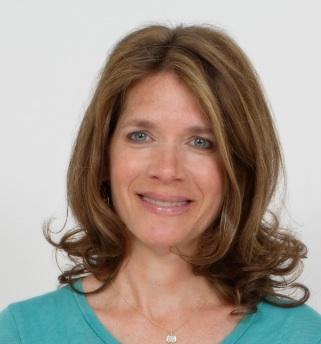 This article was contributed by Ellen Wylie of Spectacular Summers. Let Ellen help you find the right camp or summer experience for your child or teen. Visit her website at www.spectacularsummers.com or call her at: (914)722-2644 or (888)774-2267.
This article was contributed by Ellen Wylie of Spectacular Summers. Let Ellen help you find the right camp or summer experience for your child or teen. Visit her website at www.spectacularsummers.com or call her at: (914)722-2644 or (888)774-2267.













